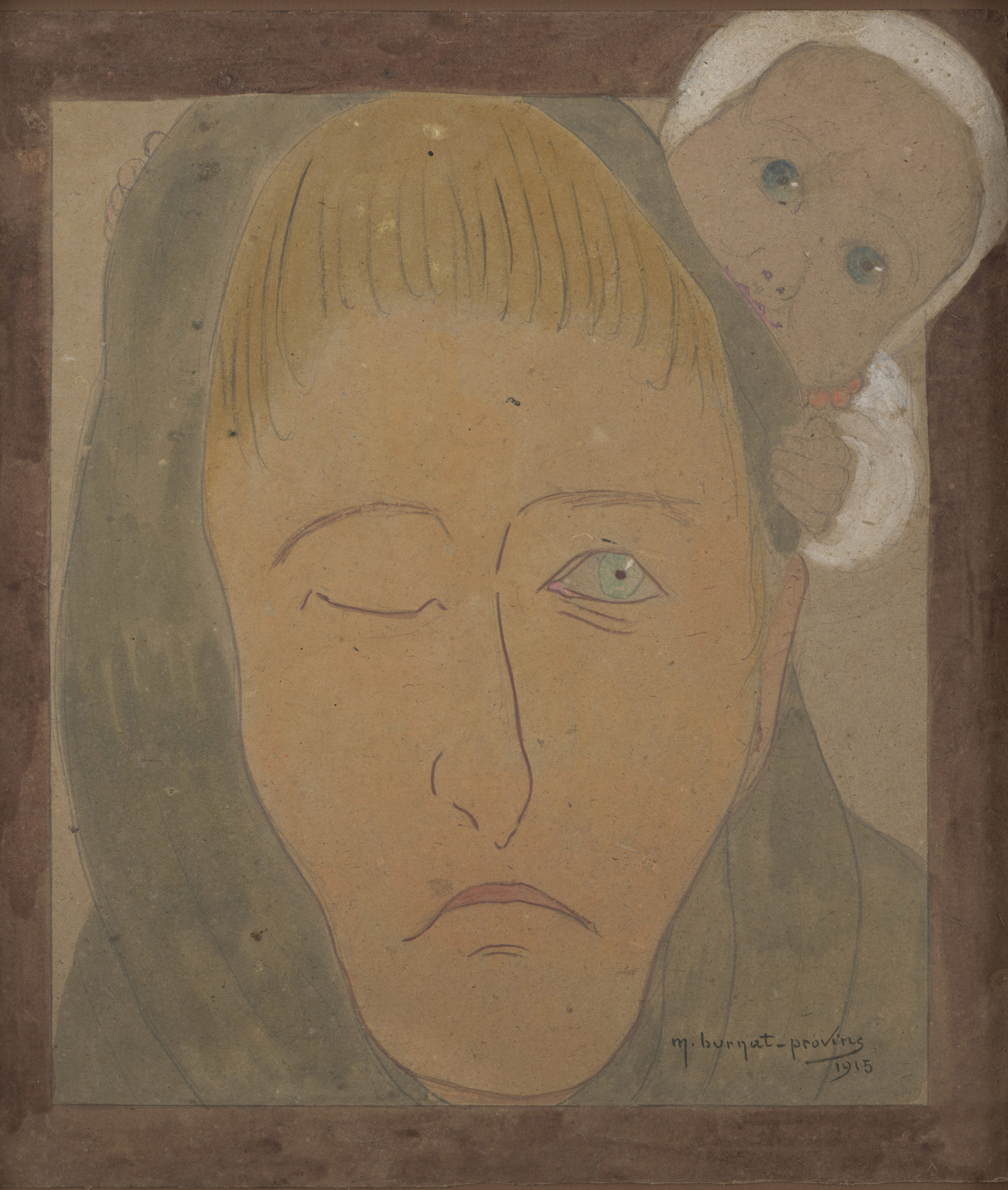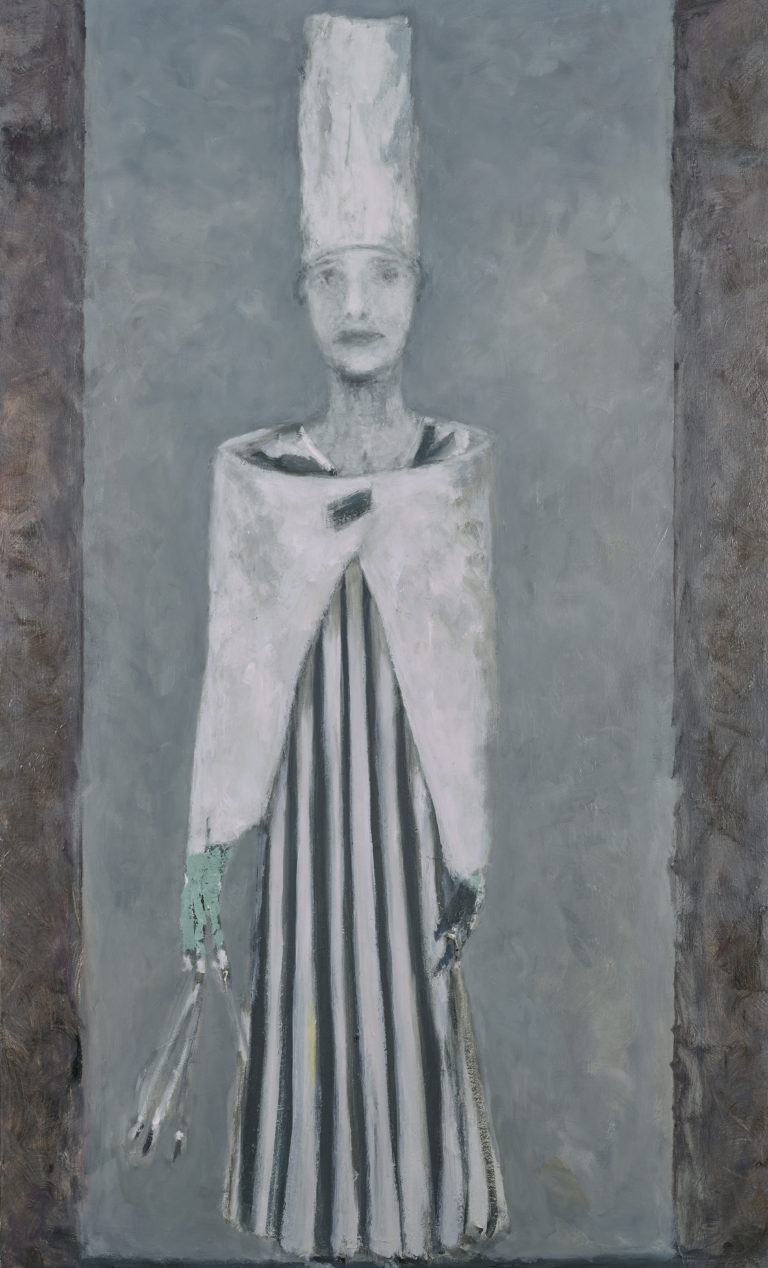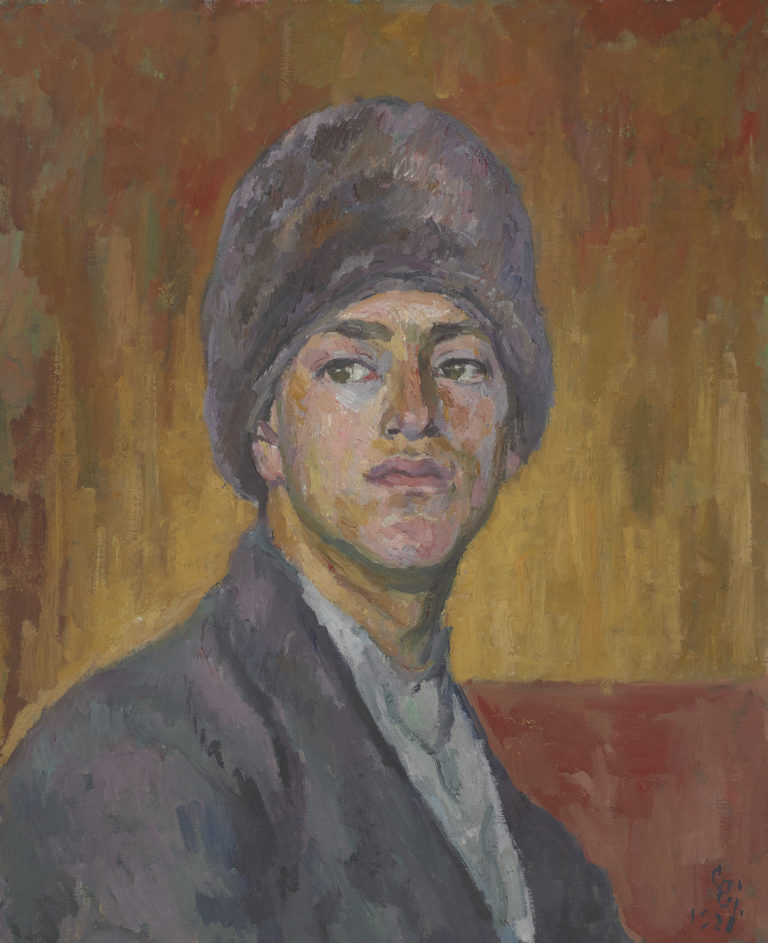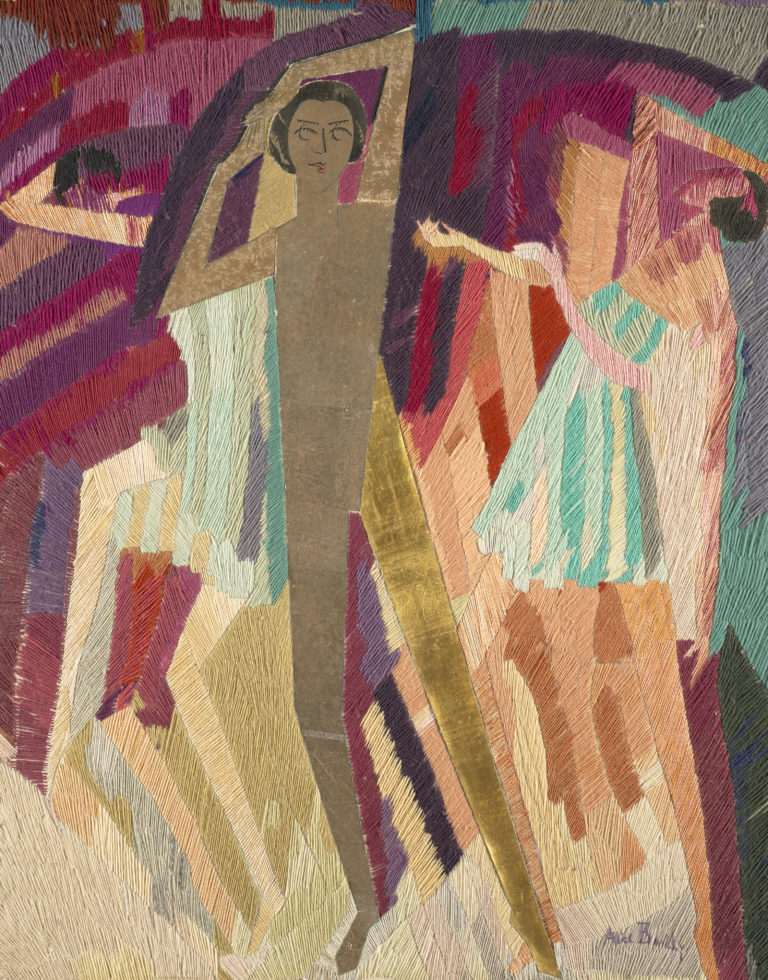Bibliographie
Anne Murray-Robertson, Marguerite Burnat-Provins. Oser la liberté, Gollion, Infolio, collection Presto, 2020, ill. p. 13.
Anne Murray-Robertson (ed.), Marguerite Burnat-Provins. Cœur sauvage, Gollion, Infolio, 2019: n. 66.
Bernard Wyder, Marguerite Burnat-Provins, exh. cat. Martigny, Le Manoir, 1980.




Marguerite Burnat-Provins’s personality, like her artistic and literary work, encompassed two contradictory facets. She was born in Arras in northern France, married in Vevey, then travelled the Valais, the Far East and South America. Her cheerfully sunny drawings, book illustrations, posters, and craftwork are inspired by Symbolism and Art Nouveau, encountered during her studies in Paris. They contrast sharply with a darker, more visionary body of work in the series of around three thousand portraits she called Ma Ville (My Town). It formed a sort of human catalogue and typology of physical, moral and intellectual characteristics. The quasi-anthropological undertaking is often seen as a substitute family for a woman who openly admitted she was frustrated in her role as a wife; it features a handful of examples of children with their mothers.
The outbreak of war in 1914 was a blow to the artist’s mental health, triggering visions of faces with enigmatic names. One year later, Griche la borgne embodies the tragic loss of the artist’s dreams of motherhood after learning of her own infertility at the age of seventeen, in 1889. As in other portraits, the powerful gaze in Griche’s one remaining eye also reflects the artist’s sadness at the early deaths of her loved ones, including the loss of her father in Vevey in 1905, who had been instrumental in expanding her education.
The tightly framed twin portrait shows two people looking straight out. The blue-eyed baby dressed in white clings to its mother, its head extending beyond the drawn frame. Like all the Ma Ville portraits, the technical language is very simple, with a narrow palette of tawny and greenish hues enlivened by an occasional touch of orange. The colour is laid down in broad swathes without formation or chiaroscuro, compensated by subtle splashes of light in the eye(s) of both characters. The pared-back lines gesture to the vocabulary of caricature.